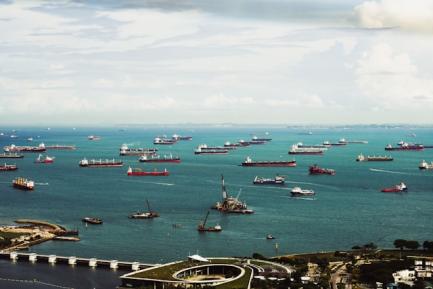
The search for economic stability in an unstable world
A sense of unstable balance will dominate the performance of the economy throughout 2024 – something which we will no doubt have to get used to and which will demand considerable flexibility among economic agents when it comes to making decisions. Such are the times in which we live.
Geopolitical risk, fragmentation and deglobalisation are some of the most searched words on social networks in recent months and reflect the complex and unstable environment that the international economy has been navigating in the last few years. This is an environment marked by a chain of shocks of a highly diverse nature that are distorting the functioning of supply and limiting the effectiveness of the demand policies that seek to recover the lost economic stability. These shocks, which feed back into each other and thus have a destabilising potential that is greater than the sum of the parts, make up what historian Adam Tooze has called a polycrisis. Although the beginning of this process can be traced back to the global financial crisis of 2008,1 events have precipitated since the pandemic, as in the absence of an ongoing solution the business cycle has had to deal with bottlenecks in production chains and their effects on inflation, the war in Ukraine and, most recently, the return of instability in the Middle East. Therefore, as geopolitics gains prominence, there are signs that we are in the midst of a decoupling of the global economy, with the rise of concepts such as de-risking and strategic autonomy. All this entails trends such as the return of industrial policy, the search for less fragile value chains and greater cooperation with trading partners,2 while greater limitations are imposed on technology transfers to countries considered rivals.

In this context of change, the business cycle has continued to show resilience as it faces the cumulative effects of both the disruptions of recent years and the uncertainty that comes with such a turbulent outlook. We thus anticipate that the world economy will end 2023 with growth of 2.8% (0.6 pps less than in 2022), but with the weakening concentrated in developed countries (1.4% versus 2.7% in 2022), especially those that are more dependent on the industrial sector such as Germany (–0.4%), while emerging countries will maintain last year’s cruising speed (4%). The recession that had been feared following the energy price rally in the summer of 2022 has thus been avoided, but the pace of economic growth remains mediocre and uneven. Most worryingly, the medium-term outlook remains poor, as the IMF’s forecast for the end of the decade (global economic growth of 3.1% in 2028) anticipates a stagnation of potential growth. To put it in context, this represents 0.5 points less than the medium-term growth that had been anticipated before the pandemic and it is almost 2 points below the growth of prior to the 2008 global financial crisis.
For 2024, an ailing economy will be highly vulnerable to any new shocks, as on the one hand the tailwinds that have allowed it to overcome the obstacles of the recent past will fade (accumulated savings, expansionary fiscal policy, etc.), while on the other hand the restrictive effects on demand of the monetary tightening process will be acutely felt in the coming months. The hope is that the economic slowdown will allow the decline in inflation to be consolidated, which would pave the way for a shift in monetary policy next year and provide good support to the bond and equity markets, in turn reducing the risks to financial stability (5.5 trillion dollars of corporate debt alone is due to mature in 2024). However, the continuation of the disinflationary process will also be subject to a high degree of uncertainty, as developments in the coming months will depend on factors that are beyond the central banks’ control, such as energy prices and the tone of fiscal policy. Moreover, all this comes as the hardest task is yet to come, namely reducing inflation from 4% to 2%.
This central scenario with a soft landing would allow the recovery of macroeconomic stability to be consolidated by closing the gap between global supply and demand, with an affordable cost in terms of GDP growth and employment. Global economic growth is expected to be slightly under 3% in 2024, but most of the slowdown will be in developed countries (+1.1% in 2024 vs. +1.4% in 2023), as the weakness which the euro area will continue to show (+0.7% in 2024) will coincide with an anticipated cooling of the North American economy in the first half of the year. However, the strength which the labour market and consumption continue to show in the US could limit the slowdown in economic activity and deactivate recessive signals such as the inversion of the yield curve slope; in contrast, in Europe the evolution of business and consumer confidence, the weakness of the industrial sector and the tightening of credit conditions suggest that growth will remain close to stagnation, at least until the summer of 2024. Emerging countries, meanwhile could even grow slightly more than they did this year (4.2% vs. 3.9%), thanks to the good performance of India, Turkey and oil-producing countries, in an environment in which central banks such as those of Brazil, Peru, Vietnam and Chile are already lowering interest rates. That said, the big question is what will happen with the Chinese economy, considering that we are witnessing a «structural» slowdown linked to a rebalancing of the growth model that could bring the country’s medium-term potential growth down to 3%. The Chinese authorities seem willing to tolerate this slower growth (we expect growth of 4.6% in 2024, compared to the official target of 5% set for 2023), but the uncertainty is regarding how the new geopolitical environment will affect China’s growth model, given the persistent ratcheting up of restrictions on exports of high-tech goods to the Asian country and the incipient restructuring of value chains that is already apparent in the trade flows of countries such as Vietnam.

In short, the weakness and fragility of the business cycle increase the sensitivity of the economic forecast scenarios to new shocks that could emerge on the horizon. This is especially the case because the layers of risk that threaten the outlook remain challenging. With interest rates at their highest levels in the last decade, coupled with the effects that rising geopolitical tensions could have on weakened expectations and strained energy prices, any forecasting exercise is fraught with uncertainty and even more so in a year with US presidential elections. This sense of unstable balance will dominate the performance of the economy throughout 2024 – something which we will no doubt have to get used to and which will demand considerable flexibility among economic agents when it comes to making decisions. Such are the times in which we live.




